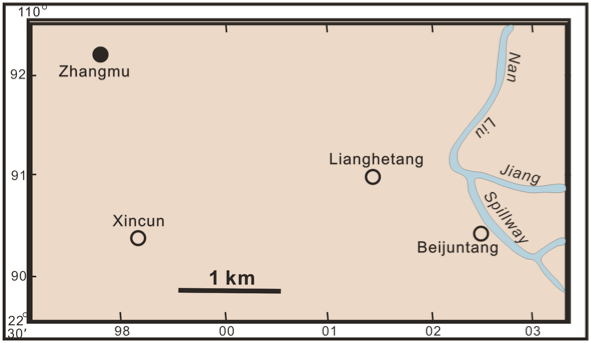Zhangmu Fm
Type Locality and Naming
The type section is located along both sides of Nanliujiang channel nearby Beijuntang village, about 3 km east of Zhangmu Town, 35 km southeast of Yulin City. Proposed by Shi W.J. of Guangxi Regional Geological Survey in 1980.
[Figure: Map showing the locations of the Beijuntan Fm, Lianghetang Fm and Zhangmu Fm in the Yulin area of Guangxi]
Lithology and Thickness
Sandy claystone. The Formation is mainly composed of gray-black mudstone and silty mudstone intercalated with thin-bedded siltstone, fine sandstone and several beds of quartz sandstone. The mudstone displays horizontal bedding while the sandstone has small laminae. The exposure of the formation is incomplete and there are occurrences of fault and fold; the thickness is estimated more than hundreds meters.
Relationships and Distribution
Lower contact
Conformable on the Lianghetang Fm. In the Changwantang Reservoir, 2 km far from type locality it rests on the Silurian strata.
Upper contact
Unclear upper contacts because of cover.
Regional extent
With restricted distribution the formation is only seen in the Yulin area.
GeoJSON
Fossils
Age
Depositional setting
The dacryoconarids are indicative of deep water basin and the occurrence of large number of benthic fossils suggest a relative shallow shelf margin environment.
Additional Information
